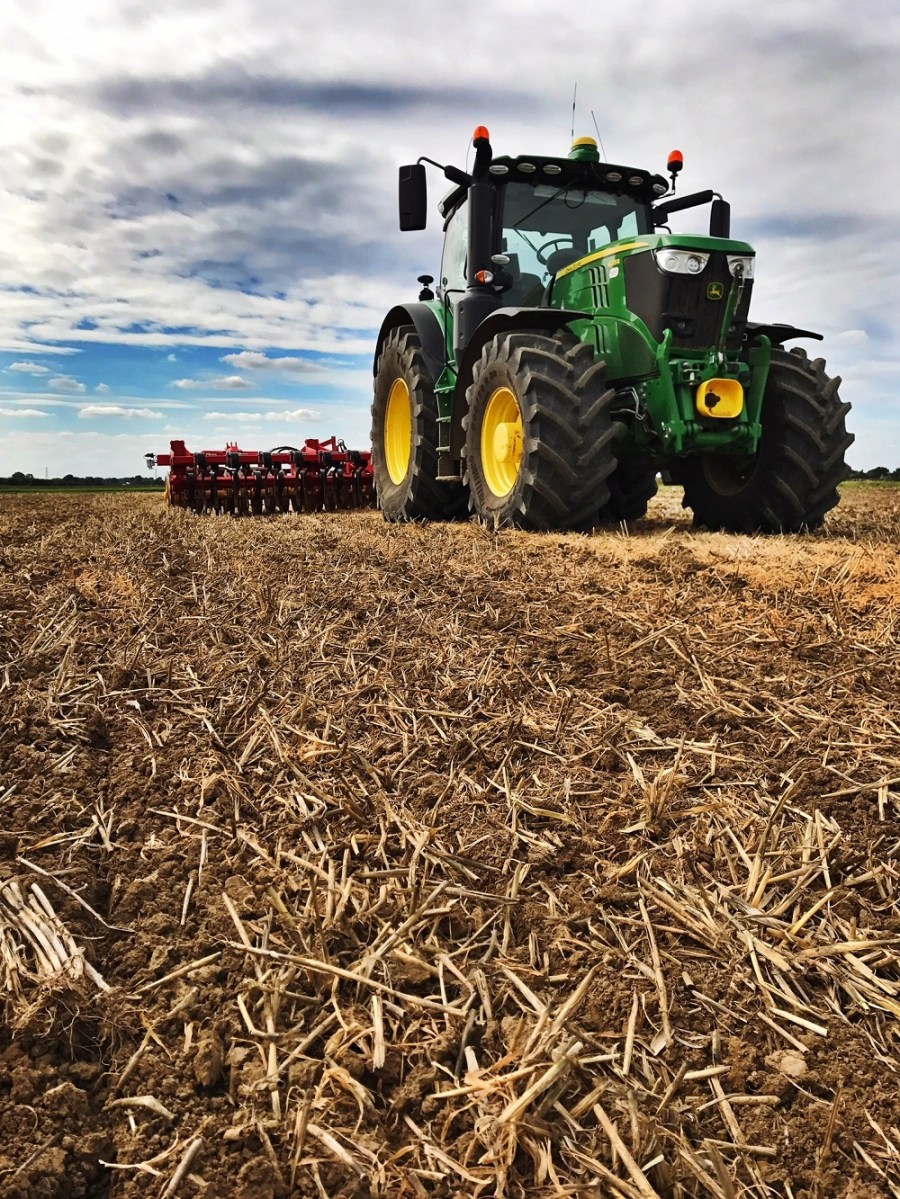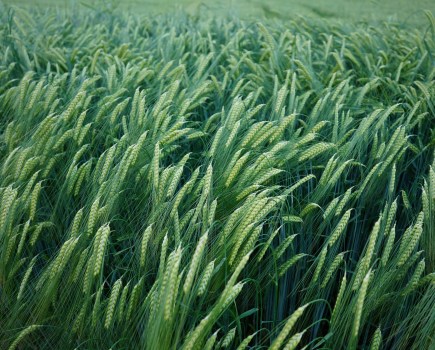Membership of the Yield Enhancement Network (YEN) doubled in 2017, as more than 200 farmers explored ways to push wheat and oilseed rape yields higher.
Many farms have seen wheat and oilseed rape yields hit something of a plateau in recent years, but YEN members are leading the way in finding ways to break this trend, says Hutchinsons crop production specialists, one of the YEN sponsors.
It was one of the main reasons that Cambridgeshire farmer and contractor Andrew Melton joined the wheat YEN last season and why he will continue in 2018.
Farming around 700ha at the family farm plus a further 800ha on contracting agreements in the Wisbech area, he is keen to prevent yields stagnating and push crops closer towards their “biophysical” potential.
“I’ve always taken an interest in all aspects of crop husbandry and have been conducting our own farm trials for a few years, so YEN was a good way to take this further by sharing resources and ideas with others. I’m BASIS qualified and do my own agronomy, although have a Hutchinsons agronomist to call on for support.”
A relatively small 4ha block of KWS Siskin winter wheat was entered into YEN last year to set a benchmark for crop performance under standard farm practice.
“Being the first year of YEN, we wanted to see where we already stand so didn’t do anything different to normal.”
The silty clay loam site, which followed spring beans, was cultivated using a Vaderstad TopDown with shallow subsoilng to remove harvest compaction, and a single surface cultivation, before being drilled in early October. It received a four-spray fungicide programme that included chlorothalonil at T0, plus SDHI chemistry at T1 and T2, before a prothioconazole + fluoxastrobin-based T3.
Lodging is an inherent risk in all crops, especially when pushing for higher yield, so growth regulators were included at T0, T1 and T2. “While a few fields of Siskin on our farm and elsewhere struggled in heavy downpours last June, our YEN trial luckily stayed standing.”
Lessons learned
The crop yielded 13.61t/ha at 14% moisture, which was good for first wheat on that land, although Mr Melton acknowledges that being a block within a field, meant yield was slightly higher than would have been averaged across a whole field.
While he is awaiting the full 2017 YEN report (at the time of writing), he has already identified several areas to focus on improving this season, notably around nutrition.
“We’ve been precision soil testing for the main variables like P, K, Mg and pH for several years, but it only provides a broad overview and there’s more detail we can get on a field basis.”
Scanning soil texture and combining this with more comprehensive soil health analysis is one area he is looking at to better tailor nutrition to individual sites.
Last season he also used Yara’s N-Sensor to measure light reflectance of the crop canopy in the YEN area. Several scans were done to build a picture through the season and he wants to use this type of information to fine-tune pesticide and nitrogen applications next spring.
Four nitrogen applications is increasingly the norm as he tries to more closely match nutrient availability with peak crop requirements. “This spring we also tried including a slow release N product with the main fungicide and did see a benefit, so it’s something we’ll do again, perhaps more frequently at the main timings.”
A similar approach applies to phosphate and potash, which are being applied more closely to periods of crop demand. Phosphate used to be applied in one dose in autumn or spring, but Mr Melton has started tailoring a smaller proportion pre-drilling for establishment, followed by repeat doses at key timings in spring.
For potash, farm trials and experience from others involved with YEN, suggests significant yield benefits from applying MOP in spring, even where soil indices suggest there is no deficiency.
“YEN ultimately provides a good platform to share ideas and best practice that we can use to our own advantage elsewhere on the farm.”
Driving future improvement
The average wheat yield among YEN growers is around 11t/ha, which is above the national farm average of 8.5t/ha, but still only around half of the biophysical potential, says Hutchinsons trials manager Dr Bob Bulmer (see table below).
“Some farmers are hitting 15-16t/ha (circa 80% of potential) on combine yield meters in good years such as 2015, so I believe achieving an average yield of 14-15t/ha is a realistic challenge with the right conditions and agronomy.”
“If you’re slipping into the 40% of potential category, there are likely to be problems that need addressing.”
Four factors are key to increasing yields and growers must pay attention to detail in every aspect of these, he adds. “It’s all about marginal gains and doing everything slightly better.”
- Variety selection
- Soil management
- Nutrition
- Crop protection
To help determine priorities Dr Bulmer says crop growth can be broken down into three key stages, all of which play different roles in building yield:
- Foundation stage (sowing to GS30/31): Establishing crops well is the focus to build resilience to pressures throughout the season. Seedbed preparation and sowing at the correct seed rate to achieve the target plant population is key to producing an even crop with strong rooting and tillering capacity. YEN research suggests wet weather during this stage is associated with low yield, so pay attention to soil management and drainage. Take time to take plant counts to measure actual establishment.
- Construction (GS30/31 to start of flowering): This is when most crop biomass growth occurs and grains per ear are determined. It is also when crops are most vulnerable, so good nutrition and fungicide management is the priority.
- Production (Flowering to harvest): Grain is formed during this final stage and yield is finally determined. Light levels are a key driver of yield, so maximising green leaf area and duration is key. Don’t relax disease control or late nutrition – keep crops disease-free, growing and standing for as long as possible.
Past YEN results (wheat)

Note: 2017 was the first year for oilseed rape YEN. Preliminary figures estimate average YEN entrant seed yields were around 5.2 t/ha, although the gross output yield (adjusted on the basis of 40% oil content) may be slightly higher. The gross output yield potential was around 12t/ha in most regions.
“Traffic light” system for assessing the % of yield potential achieved:

YEN open for 2018 entries
Registration is now open for the wheat and oilseed rape 2018 YEN categories.
Growers can enter one or both networks. If you are interested in taking part please contact Dr Bob Bulmer by emailing: information@hlhltd.co.uk.
The YEN project is led by ADAS and is sponsored by Hutchinsons, together with a number of other companies from the arable sector.




